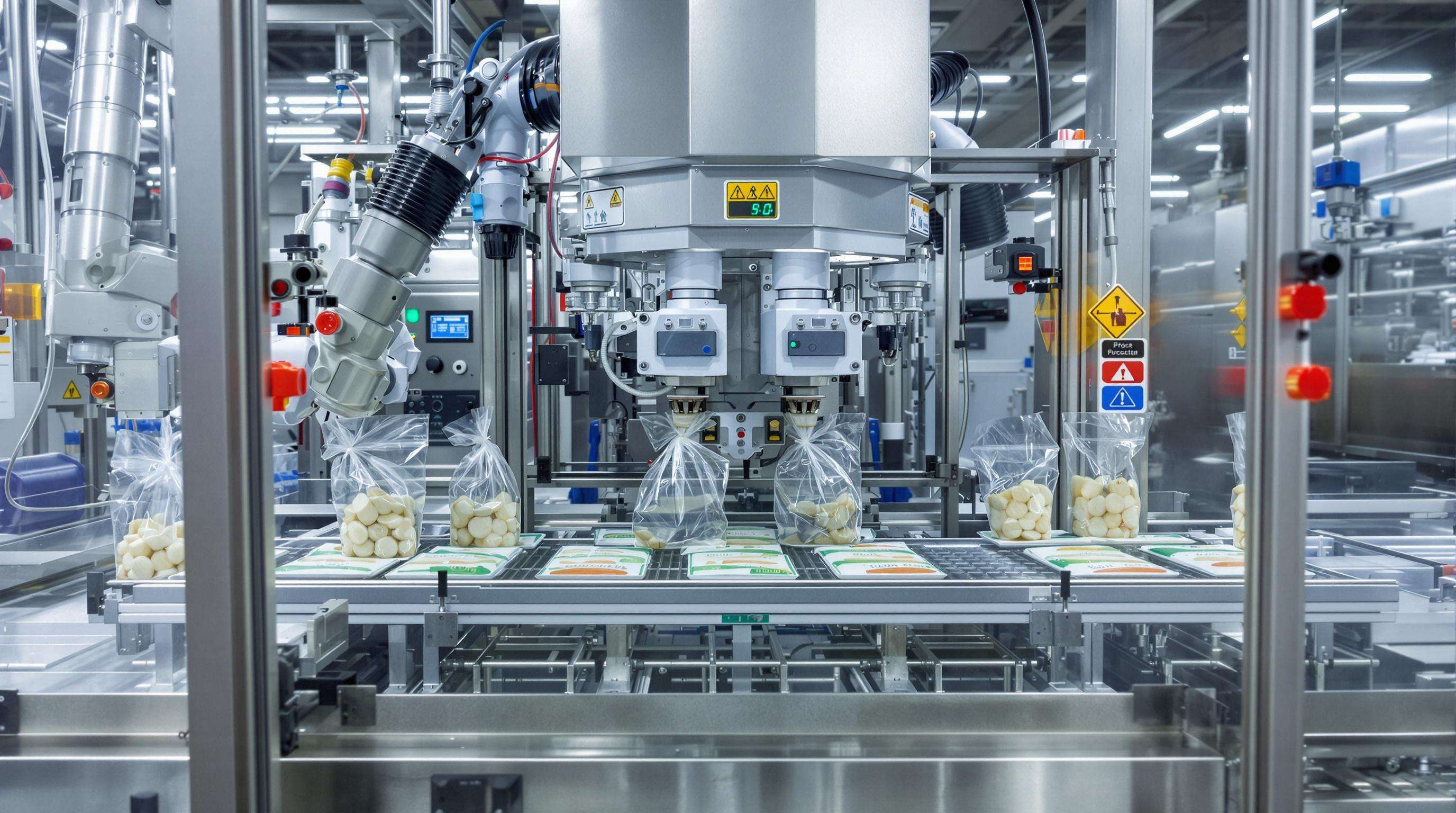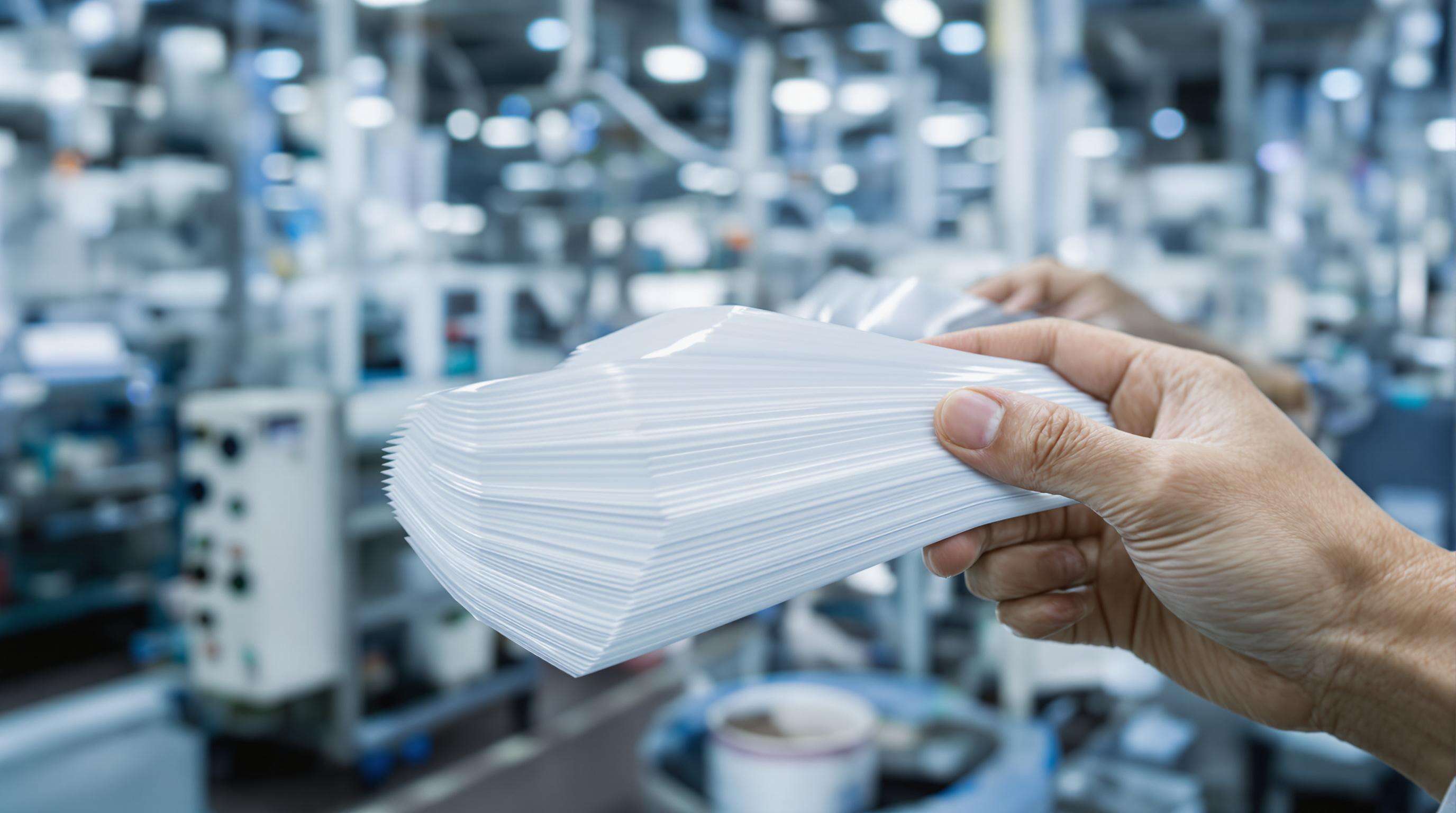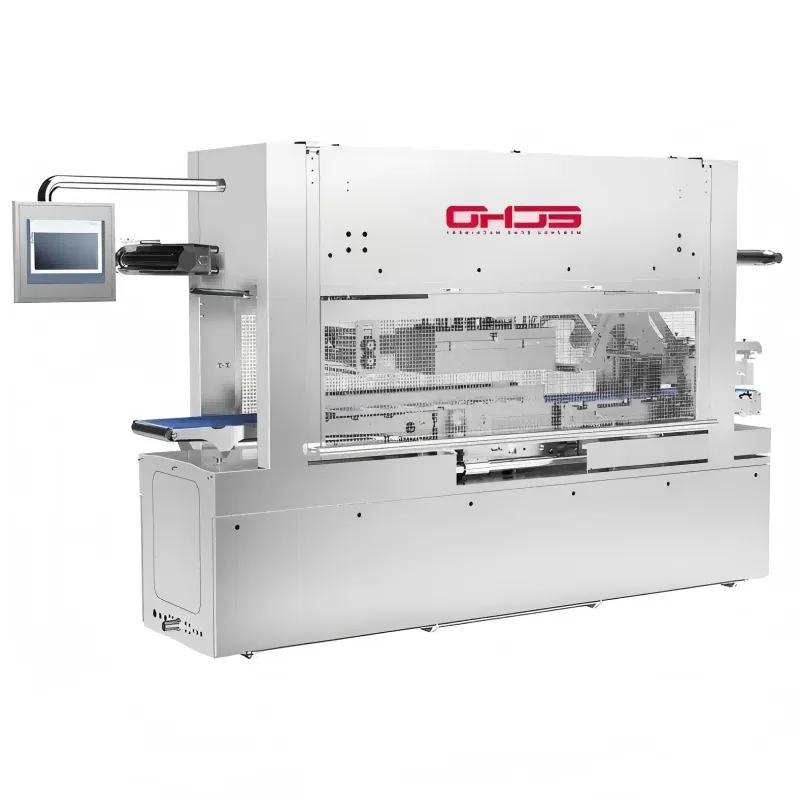Advanced Sealing Methods in Food Bagging Machines

Hermetic Sealing Technology for Oxidation Prevention
Modern food bagging machines utilize hermetic sealing to create oxygen-resistant barriers, blocking oxidation—the primary cause of flavor degradation, color loss, and nutrient depletion in perishables. Industrial trials confirm these systems reduce oxygen transmission rates by over 95%, with precision heat control maintaining under 0.5% residual oxygen levels post-sealing.
Hygienic Sealing Solutions for Contamination Prevention
Sanitary sealing designs eliminate microbial ingress points through:
- Non-contact ultrasonic sealing heads
- CIP-compatible surfaces with sub-0.8 roughness
- HEPA-filtered air curtains Stainless steel construction ensures FSMA compliance, reducing contamination risks by 82% compared to conventional systems.
Case Study: 30% Shelf-Life Extension Through Gas Flush Systems
A North American meat processor achieved these results with nitrogen-based gas flushing:
| Parameter | Before | After | Improvement |
|---|---|---|---|
| Average shelf life | 21 days | 27+ days | 30% + |
| Product shrinkage | 9.3% | 5.1% | 45% − |
| Customer returns | $18k/month | $6k/month | 67% − |
The modified atmosphere approach displaced residual oxygen before hermetic sealing, preserving moisture and texture without chemical additives.
Automated Error Detection in Seal Integrity
Vision systems and pressure-decay sensors screen for microscopic seal imperfections at 200 units/minute, with neural networks achieving 99.4% detection accuracy. This reduces manual inspection labor by 70% and intercepts 5 faulty packs per 10,000—a 25-fold improvement over human oversight.
Barrier Materials Revolution in Food Packaging Machines

Multi-Layer Films with Oxygen Absorbing Properties
These films combine EVOH laminates and nanoscale active agents, reducing headspace oxygen below 0.1% to extend shelf life up to 30%:
| Oxygen Barrier Comparison | Traditional Films | Multi-Layer Films |
|---|---|---|
| Oxygen Transmission Rate | 150-300 cc/m²/day | <1 cc/m²/day |
| Food Waste Reduction | Marginal | 40-60% decrease |
UV-Resistant Packaging for Light-Sensitive Products
Laminated barriers filter 99% of harmful 200-400nm wavelengths, preventing 70% of vitamin degradation in milk and reducing off-flavor development in oils by 45%.
Cost-Benefit Analysis of High-Barrier Materials
Premium films deliver 3X ROI despite 15-40% higher costs, reducing supply chain waste by 50% and recall risks ($10M average incident cost).
Smart Technologies in Food Packaging
Time-Temperature Indicators in Automated Lines
TTIs change color during thermal abuse, with integrated sensors rejecting compromised items—reducing distribution chain failures by 22%.
RFID Tracking for Cold Chain Compliance
RFID tags provide real-time temperature/location data, reducing perishable losses by 30% annually while ensuring FSMA 204 traceability.
Controversy Analysis: Privacy Concerns in Smart Labeling
European regulations now require RFID deactivation at point-of-sale to address GDPR concerns, despite producer arguments for recall management benefits.
Robotic Automation in Hygienic Food Bagging
Touchless Handling Systems Reducing Microbial Risks
Vision-guided robotic systems achieve 99.7% pathogen reduction with 80% fewer sanitation interventions versus manual lines.
Industry Paradox: Automation Costs vs Recalls Prevention
While robotic systems require significant investment, they demonstrate ROI in 2-3 years by cutting contamination incidents by 62% ($10M average recall cost).
| Automation Factor | Impact |
|---|---|
| Capital Investment | 15-20% annual cost reduction |
| Workforce Transition | 45% lower staffing risks |
Biodegradable Film Compatibility
High-speed sealers maintain 200 bags/minute throughput with plant-based polymers, meeting ECOCERT standards through precise temperature control (100-140°C).
Energy Recovery Systems
Thermal energy recuperation saves 580 MWh annually, reducing carbon emissions by 28% per unit while aligning with ISO 50001.
FDA-Approved Recyclable Materials
Post-consumer rPET processing and barrier-coated paperboard now achieve Class A shelf-life performance equivalent to virgin plastics.
FAQ
What is hermetic sealing in food packaging?
Hermetic sealing creates an oxygen-resistant barrier in food packaging, which helps prevent oxidation and shelf life degradation.
How do gas flush systems extend shelf life?
Gas flush systems displace residual oxygen with inert gases like nitrogen before sealing, preserving food moisture and texture.
What are time-temperature indicators (TTIs)?
TTIs indicate thermal abuse in food packaging by changing color, alerting to temperature-related compromise.
What is the role of RFID tracking in food packaging?
RFID tags monitor and provide real-time data on temperature and location to ensure cold chain compliance, reducing perishable losses.

